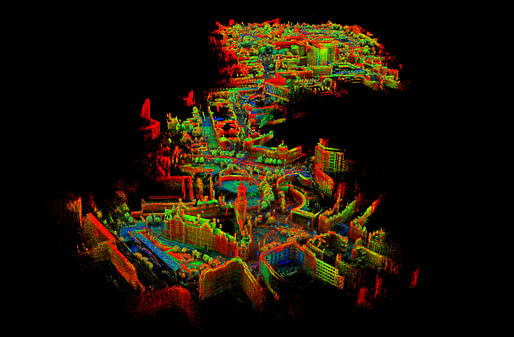

An online space called Virtual Bradford is set to be completed this summer that would provide a high-resolution 3D online “brick-for-brick” digital twin of Bradford, England’s city center.
The project is a collaboration between the University of Bradford and the Bradford Council. It is also partially funded by the European Union SCORE project, which aims to improve public service through smart open-data solutions. It is hoped Virtual Bradford can help how the city deals with planning, air pollution, traffic management, flood risk, noise pollution, along with the creation of green space.
“Virtual Bradford represents a revolution in terms of city planning,” said Professor Chris Gaffney, Chair in Archeological Sciences at the University of Bradford. “It will enable people to look at the built environment in a virtual 3D world, and then see what impact new developments have on things like surface water drainage, noise pollution, clean air and visual impact.”
“One of the biggest issues Virtual Bradford will contribute to is clean air, and it will help to support the creation of ‘active travel neighbourhoods,’ the whole premise of which is to limit through-traffic on local roads to make them safer, and thereby promote cycling and walking as part of everyday leisure activities,” added Professor Andrew Wilson, Chair in Forensic and Archeological Sciences.
Researchers from Visualizing Heritage, a research team from the School of Archeological and Forensic Sciences at the University of Bradford, have spent months collecting laser scan data, digital imagery, and drone data in order to develop the digital twin. An electric trike containing mounted laser scanners was used to take 360-degree images from ground level, and a drone was used to capture the city’s skyline.
Virtual Bradford is believed to be the first open-source 3D replica of a city in the UK to offer this level of detail. It is hoped that it will act as a platform for new cultural developments, as the city bids for UK City of Culture 2025. In fact, it is currently being expanded to include the UNESCO world heritage site of Saltaire in Bradford through funding from the Arts & Humanities Research Council.
In addition to city planning, Virtual Bradford has other potential applications, such as the creation of heritage trails and mapping cultural assets in 3D. Businesses could open virtual shops and artists could display virtual exhibitions.
“A lot of Virtual Bradford’s initial uses might be things like planning, air pollution and traffic modelling, but we think it will grow organically, as people start to realize its potential,” said Bradford Councilor Alex Ross-Shaw.
“Another potential use is to invite artists to submit projects, and we are already working on virtual historical tours that show what the city looked like in the past. There’s also potential for this to be used by film production companies who want to use the city as a backdrop,” added Shaw.
Virtual Bradford is one of several projects that contributed to the University of Bradford winning the Queen’s Anniversary Prize for outstanding archeology.
No Comments
Block this user
Are you sure you want to block this user and hide all related comments throughout the site?
Archinect
This is your first comment on Archinect. Your comment will be visible once approved.